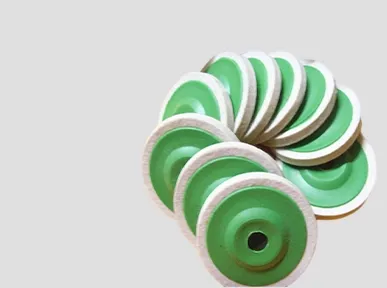Exploring the Versatility and Applications of Non-Woven Felt Materials
The Versatility of Non-Woven Felt Applications and Advantages
Non-woven felt is a unique textile that has gained popularity in various industries due to its versatility, durability, and eco-friendliness. Unlike traditional woven fabrics, non-woven felt is made by bonding fibers together through processes such as heat, chemicals, or mechanical means. This article explores the properties, applications, and advantages of non-woven felt, making it a material of choice for many manufacturers and consumers alike.
Properties of Non-Woven Felt
Non-woven felt comes in a variety of thicknesses, densities, and colors, which make it suitable for a wide range of applications. The fibers used in the production of non-woven felt can be made from natural materials like wool, cotton, and rayon or synthetic materials like polyester and polypropylene. This diversity in material selection allows for customizability, with manufacturers able to create felt with specific characteristics such as water resistance or thermal insulation.
The bonding process used to create non-woven felt results in a fabric that does not fray or unravel, giving it significant longevity. Additionally, non-woven felt is breathable and has good moisture-wicking properties, making it a practical choice in situations where comfort is key. Its lightweight nature combined with excellent cushioning properties also makes it an ideal material for various applications.
Applications of Non-Woven Felt
Non-woven felt is utilized across a multitude of industries, each benefiting from its unique characteristics. Some of the most common applications include
1. Crafts and DIY Projects Non-woven felt is popular in the crafting community for its ease of use. It can be cut into various shapes without the need for hemming, making it an attractive option for DIY projects, educational crafts, and children’s activities.
2. Fashion and Accessories In the fashion world, non-woven felt is used to create bags, hats, shoes, and other accessories. Its ability to hold shape while being lightweight allows designers to explore innovative styles without compromising on functionality.
3. Automotive Industry Non-woven felt is increasingly being used in the automotive sector for sound insulation, thermal protection, and interior linings. It enhances comfort in vehicles by reducing noise levels and regulating temperature, thus contributing to a better driving experience.
non woven felt

4. Home Textiles In home textiles, non-woven felt serves as a backing material for carpets, rugs, and quilts. Its cushioning properties provide comfort and support, making it a favorite choice for high-quality home furnishings.
5. Packaging Solutions Non-woven felt is also gaining traction in sustainable packaging solutions. Its biodegradable nature makes it an environmentally friendly alternative to plastic, and it provides excellent cushioning for delicate items during transit.
Advantages of Non-Woven Felt
The growing popularity of non-woven felt can be attributed to several advantageous factors
1. Eco-Friendliness Many non-woven felts are made from recycled materials or biodegradable fibers, making them a sustainable choice for environmentally conscious consumers.
2. Cost-Effectiveness Non-woven felt is generally less expensive to produce than traditionally woven fabrics. This affordability makes it an attractive option for manufacturers and end-users alike.
3. Ease of Maintenance Non-woven felt can often be cleaned easily, depending on the fiber content. Its resistance to fraying and unraveling means that products made from non-woven felt retain their appearance longer, providing added value to consumers.
4. Customizability The ability to easily dye, cut, and shape non-woven felt makes it a favorite among designers and manufacturers looking to create one-of-a-kind products that stand out in the market.
In conclusion, non-woven felt is a remarkable material that embodies versatility, durability, and sustainability. Its range of applications across various industries, combined with its cost-effectiveness and ease of use, positions it as a significant player in the world of textiles. As innovation continues in this field, we can expect to see even more creative uses for non-woven felt, further expanding its presence and importance in contemporary design and manufacturing.
-
What Makes Felt a Great Choice?NewsNov.19,2024
-
Total Mixed Ration (TMR) Feed for CattleNewsNov.19,2024
-
The Ultimate Guide for Felt Polishing WheelsNewsNov.19,2024
-
Industrial Felt for Various ApplicationsNewsNov.19,2024
-
Felt Makeup Bags and Inserts BagsNewsNov.19,2024
-
Choosing the Right Hotel TowelsNewsNov.19,2024
-
Your Go-To Guide For Affordable Wholesale Wool FeltsNewsOct.31,2024







